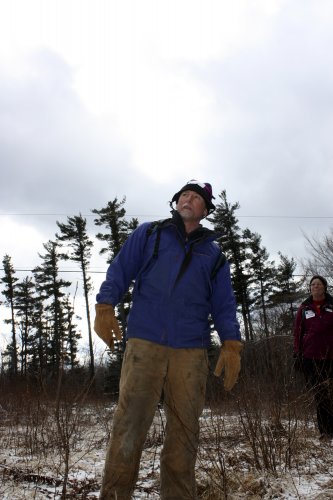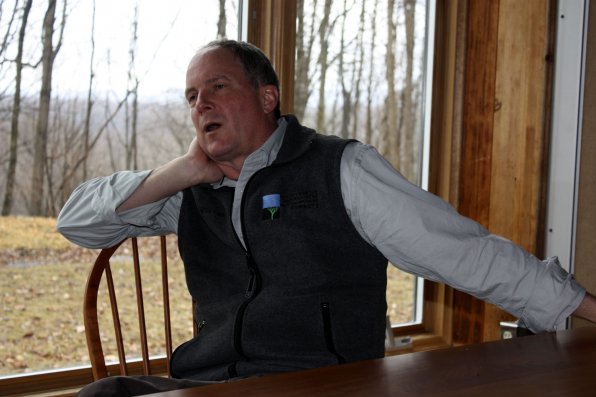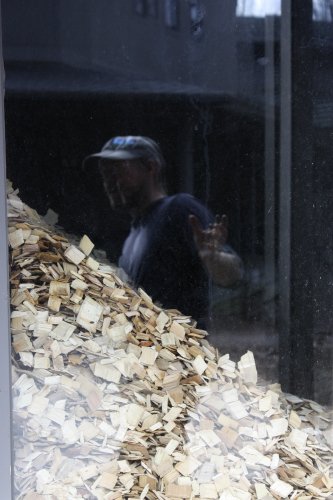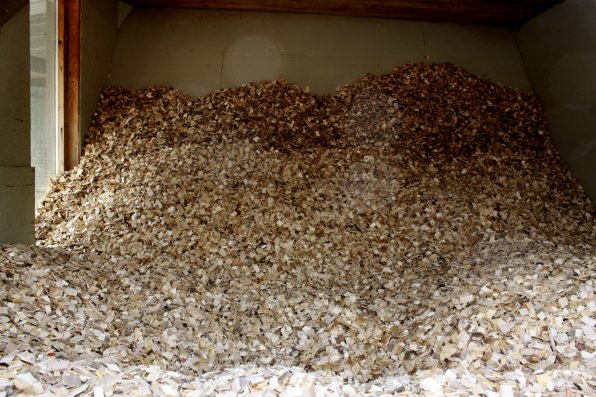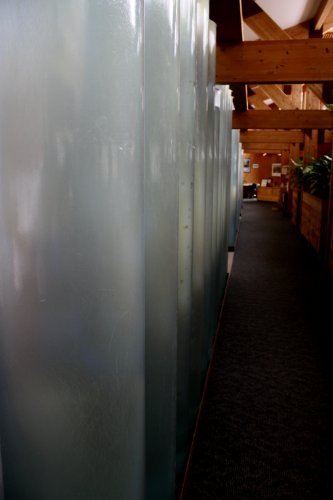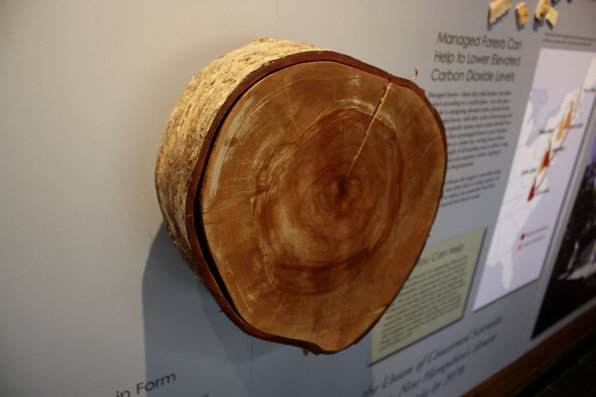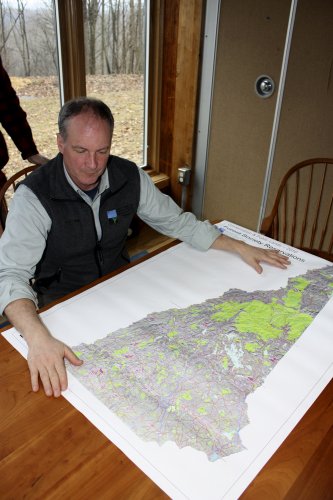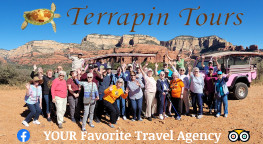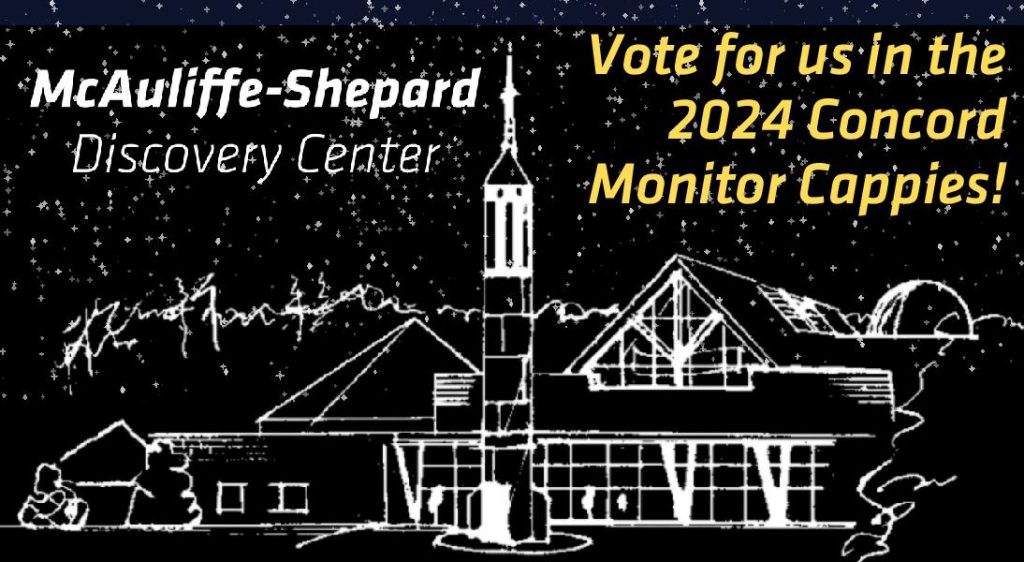On a clear day, you can see the shimmering golden dome of the state capitol building from the deck at the office of the Society for the Protection of New Hampshire Forests. Some employees make the roughly 4-mile trek from that downtown landmark via bicycle, navigating one of several leafy pathways cut through the landscape.
It's not unusual to have the workday briefly interrupted by a call across the intercom, alerting workers to a bald eagle perched on a tree outside.
It's all part of what Jack Savage calls “walking the walk.”
“Overall, what we try to do here is set an example,” Savage, the vice president of communications/outreach, said.
The Society for the Protection of New Hampshire Forests was formed to conserve and manage the state's woodlands and other iconic landscapes and has already ensured 30 percent of the state's 5.8 million acres will be preserved as is. But the organization's dedication to its goal is just as evident within the walls of its office as it is outside.
The Portsmouth Street locale was green before green was hip. Built in 1980, it includes a row of floor-to-ceiling tubes of water, which absorb sunlight during the day and release heat in the evening, limiting the amount of work the furnace must do overnight.
There is no air conditioning in the building outside of the room that houses computer servers; rather, all employees open their windows at night to allow cool air in and close them in the morning to lock it in place. The entire campus is likewise heated by wood chips.
A newer wing in the building includes an elevator run partially on canola oil, composting toilets and plants spread throughout the atrium to improve air quality. Much of the wood used to construct that wing was cut down on-site.
“It's a great example of the evolution of green building over the last three decades,” Jason Teaster, the conservation center property manager, said.
Setting the pace in its own work space is only part of the equation for the organization. Formed in 1901 after significant cutting in the White Mountains threatened the watershed and therefore the water supply well into the southern portion of the state, the quest has always been to conserve land that needs to be conserved and to educate the public on ways it can help.
The society now owns 4,000 acres on and around Mount Monadnock and was instrumental in preserving the landscape at Mount Sunapee and Mount Kearsarge, as well. In all, the society owns more than 50,000 acres over 170 plots around the state.
It has also locked up more than 120,000 acres in conservation easement agreements with private land owners.
“We endeavor to raise awareness about the importance of the forested landscape,” Savage said. “It's all about developing the right places and keeping the right places as forests.”
That is an important distinction. The group focuses on preserving land while keeping it available for responsible use, not roping it off and turning it into a forest museum.
“There's a difference between preservation and conservation,” Teaster said. “Preservation says leave it alone, but we're trying to do something where we use the resources with the wisdom of our forebearers and the wisdom of today.”
Added Savage: “It's a holistic approach. It's not about never stepping foot on the land again, it's about making use of it and making use in a responsible way.”
The organization includes about 40 employees but also leans heavily on volunteers, which allows it to cover the entire state. Anyone with specialized knowledge in a particular area is always welcome to pitch in, and the group employs about 100 “land stewards,” citizens assigned to keep watch on a particular reservation and make sure all laws and guidelines are being followed.
“They are our eyes and ears,” Savage said.
The society also has three employees responsible for remote sensing, an aerial observation technique that ensures land is being treated properly, and has two paid lobbyists on staff to advocate at the State House for conservation-related issues.
The organization also subscribes to a vision referred to as “New Hampshire Everlasting,” a quest to protect another million acres by 2026, which would leave the state's forests 40 percent protected, in perpetuity.
Educating the entire state can be something of a daunting task, particularly those who live in sheltered city environments. But Savage said it's important for those residents to realize the impact of nature on things like their water supply, which often comes from the woodland areas up north.
“The challenge is to connect with people in cities, helping the urban dweller understand the importance of the rural landscape on their own quality of life,” Savage said.
Selecting which portions of the state to conserve can be equally challenging. To that end, the society uses a mapping system that identifies “layers” of critical resources to show areas that may include benefits across a wide range of categories. That helps remove emotion from the equation in some instances.
“The natural landscape knows no political boundaries,” Savage said.
Political issues still persist, though. The society is against the highly-publicized Northern Pass project, which proposes to run 1,100 electrical towers on 180 miles of transmission line, some of which would cut through protected areas.
The group is vehemently opposed to the plan “as is,” Savage said.
“We oppose the Northern Pass as it's proposed because of the impact on existing conservation land,” he said. “We have a legal and ethical obligation to conserve, and our interest in this particular battle comes from a long history of protecting the environment.”
Situations like the Northern Pass aside, great progress has been made in conserving land throughout the state. So much so that Savage said he can envision a future – sooner than later – where conservation becomes second nature and the focus shifts to responsible use of the state's many resources.
“I can see a pendulum-swing away from conservation and more toward sustainable management,” Savage said. “People can see managed forests will be healthier forests.”
People interested in becoming a member can visit the Society website at forestsociety.org, call 224-9945 or email info@forestsociety.org.

